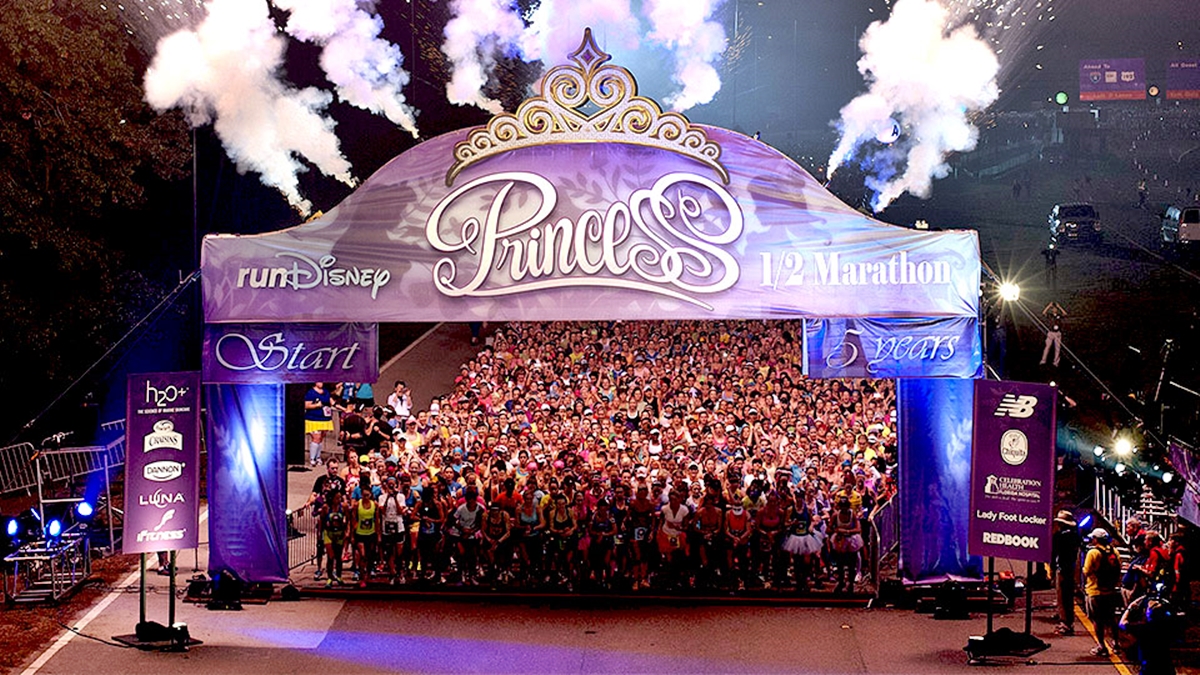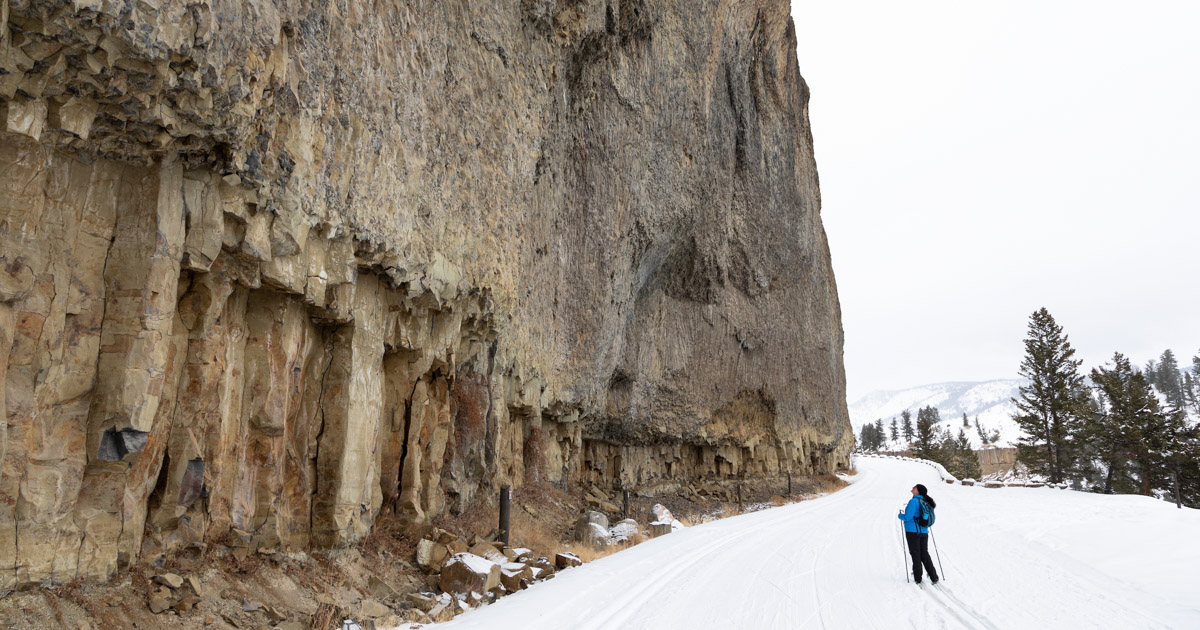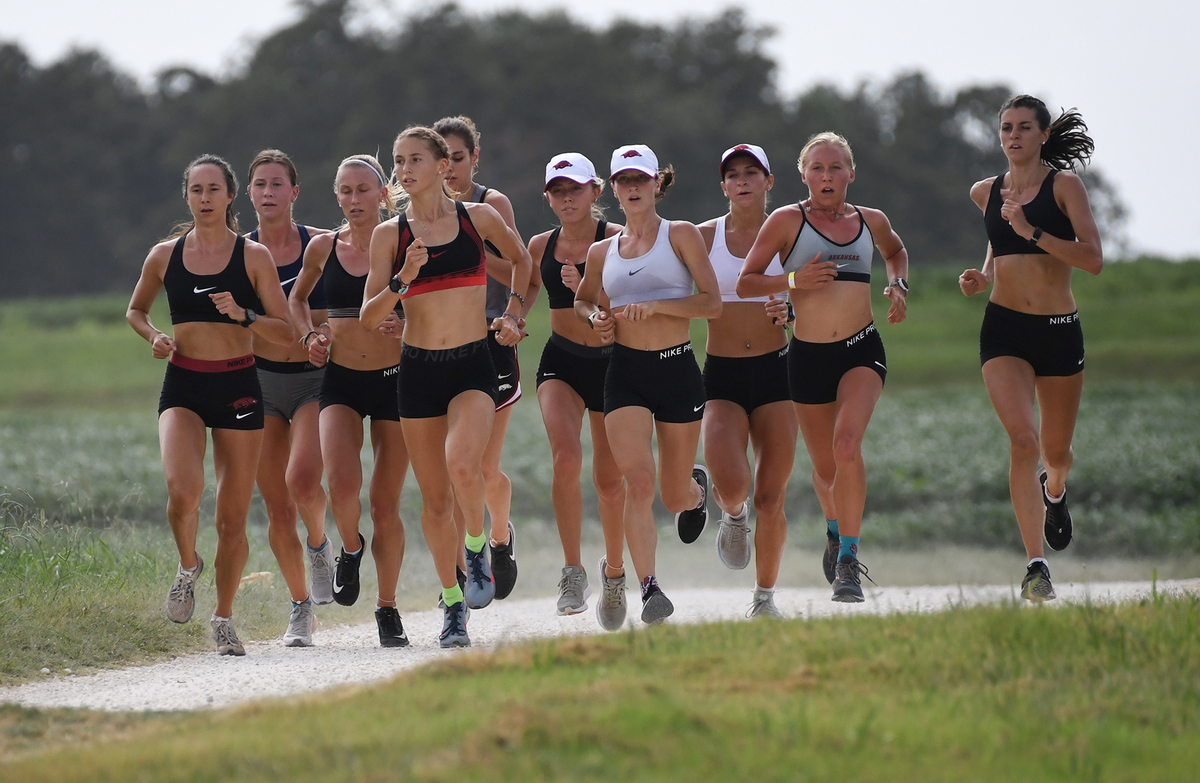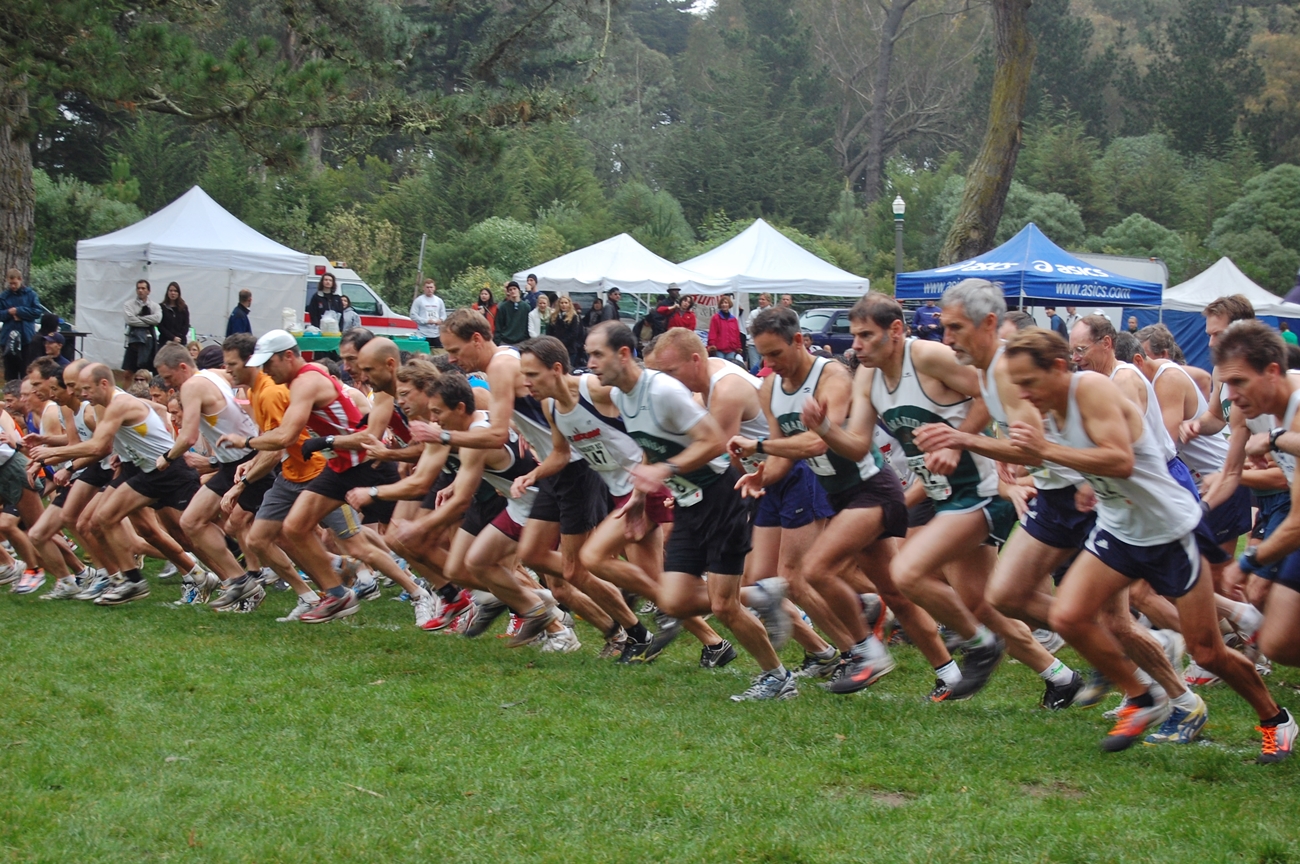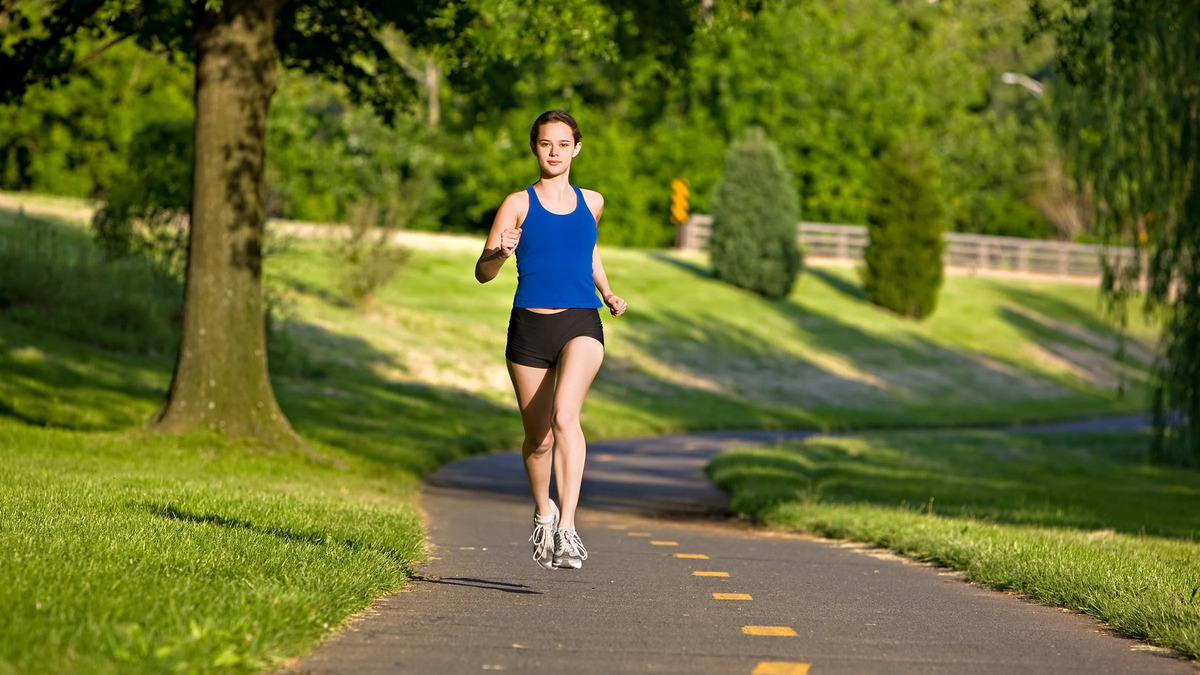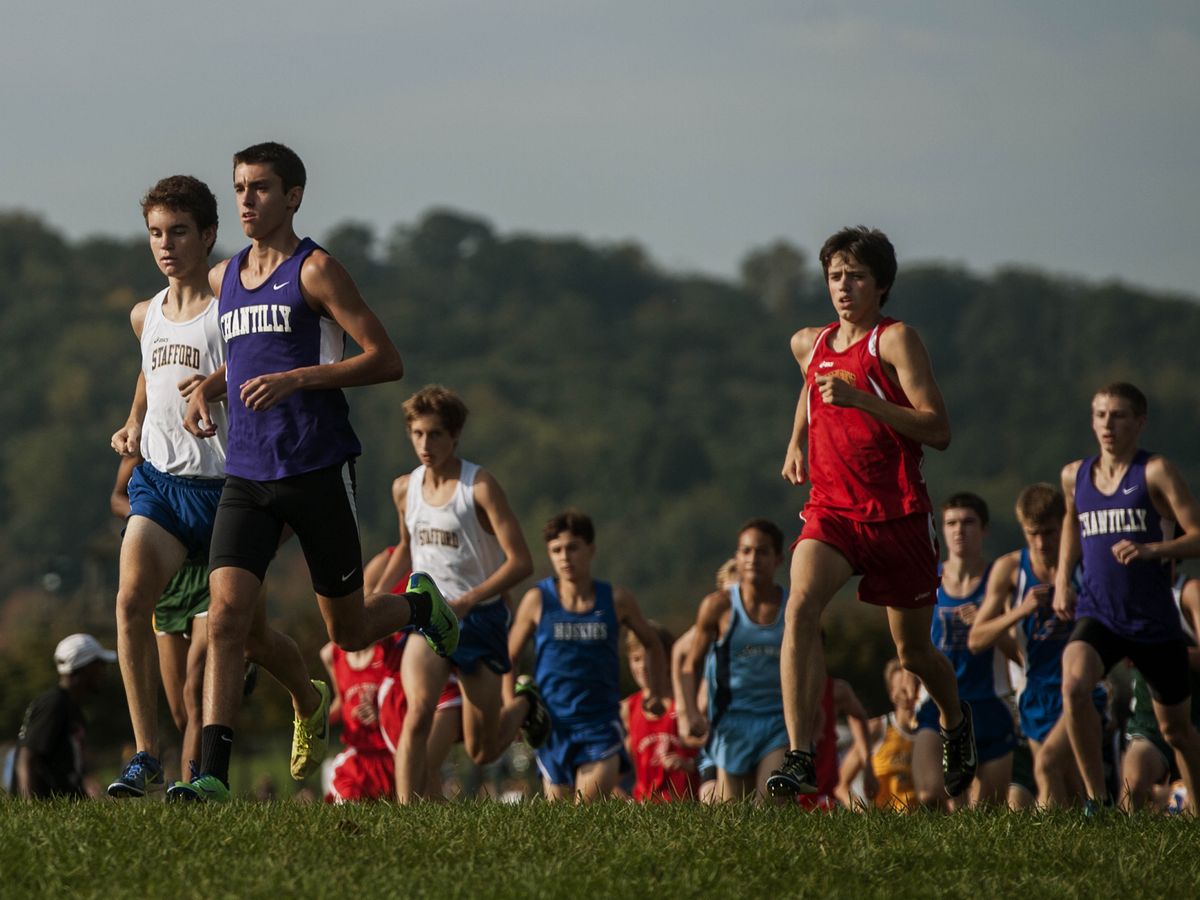Home>Misc>Featured>What Distance Do Kids Run For Cross Country
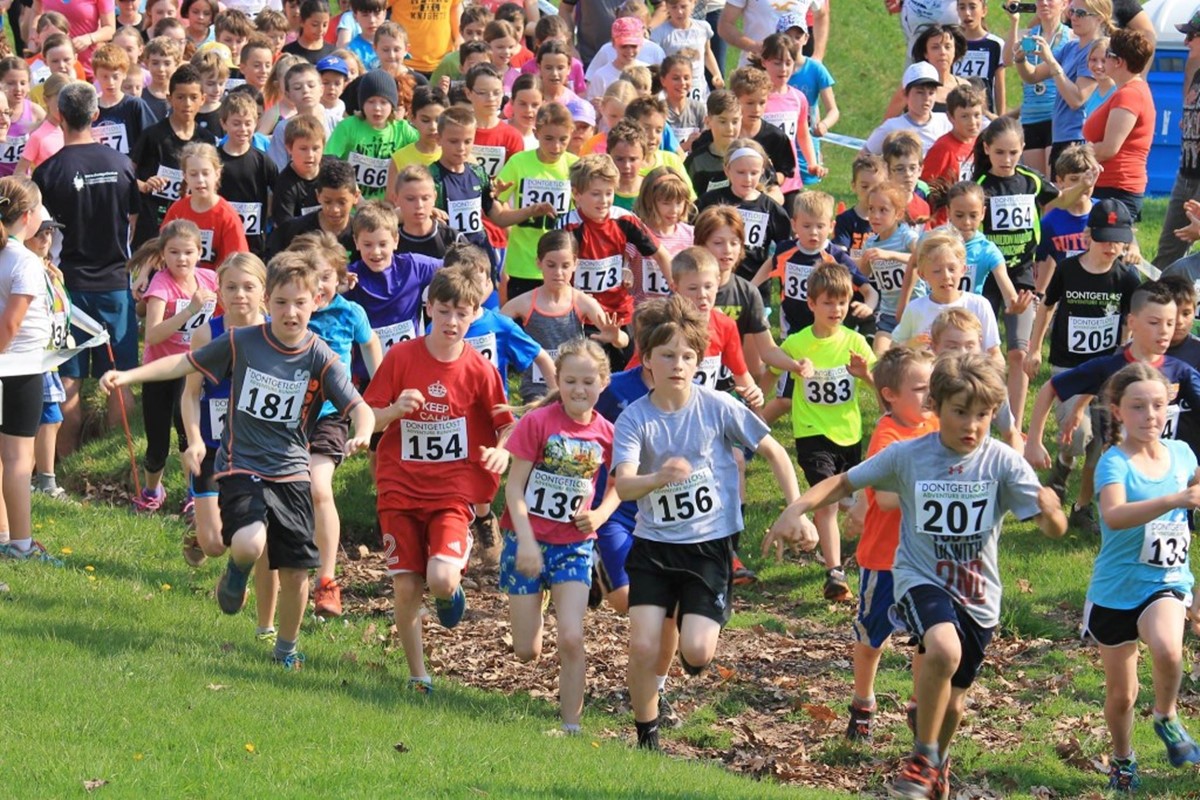

Featured
What Distance Do Kids Run For Cross Country
Modified: August 19, 2023
Discover the featured distances that kids run for cross country, including helpful tips, training techniques, and more.
Introduction
Welcome to the exciting world of cross country running for kids! Whether your child is a budding athlete or simply wants to stay active and enjoy the great outdoors, cross country can offer a fun and challenging experience. But before your little one laces up their running shoes and hits the trails, it’s important to understand the significance of this sport and what it entails.
Cross country running is a popular sport for children of all ages, providing numerous physical and mental benefits. It promotes endurance, cardiovascular health, and overall fitness while fostering teamwork and resilience. Unlike other track events that take place on a closed loop, cross country courses span varied terrains, incorporating grassy fields, dirt paths, and even rugged trails. This dynamic setting not only adds an element of adventure but also requires runners to adapt to different surfaces and terrains.
Regular training for cross country is essential to prepare young runners for the challenges ahead. It helps improve their endurance, speed, and overall performance on race day. Training sessions often involve a combination of distance runs, interval workouts, hill repeats, and strength training exercises. Additionally, incorporating proper stretching and warm-up routines can help prevent injuries and enhance flexibility.
The distances covered in cross country races can vary depending on several factors, such as age category, course specifications, and competition guidelines. For children, the distances are typically shorter compared to adult races, ensuring that they are both challenging and age-appropriate. It’s worth noting that these distances are not set in stone and can vary from one event to another.
In this article, we will explore the typical distances covered by kids in cross country races, factors that can affect these distances, age categories, and safety considerations to ensure a positive and enjoyable running experience for young athletes. So, lace up your shoes and get ready to dive into the thrilling world of cross country running for kids!
The Importance of Cross Country for Kids
Cross country running is not only a great way for kids to stay active but also offers numerous physical, mental, and social benefits. Let’s take a closer look at why cross country is important for children:
1. Physical Fitness: Cross country helps children build strong cardiovascular endurance, muscular strength, and overall fitness. It involves running over various terrains, which challenges different muscle groups and improves their overall stamina. Regular participation in cross country can lead to improved overall health, increased lung capacity, and a strong foundation for lifelong physical fitness.
2. Mental Well-being: Engaging in cross country can have a positive impact on a child’s mental health. Regular exercise stimulates the release of endorphins, which can improve mood, reduce stress, and boost self-esteem. Running outdoors in natural settings also provides a sense of tranquility and offers a break from the pressures of daily life.
3. Discipline and Goal Setting: Cross country requires discipline and dedication to training regimens. Children learn the importance of setting goals, creating training plans, and sticking to them. This helps them develop essential life skills such as time management, perseverance, and the ability to overcome obstacles.
4. Teamwork and Camaraderie: Cross country is not just an individual sport; it also emphasizes teamwork and camaraderie. Kids learn the value of supporting and encouraging their teammates, as well as relying on others for support during races. Being part of a team fosters a sense of belonging and promotes social interaction and friendship.
5. Character Building: Cross country challenges children physically and mentally, teaching them important life lessons such as resilience, determination, and sportsmanship. They learn to push through fatigue, overcome obstacles, and celebrate both personal and team achievements. These experiences contribute to the development of strong character traits and a growth mindset.
6. Connection with Nature: Cross country allows kids to experience the beauty of nature while participating in a sport. Running through parks, wooded trails, or open fields not only offers a change of scenery but also provides an opportunity to appreciate and connect with the natural world.
Overall, cross country offers a holistic approach to physical fitness, mental well-being, and character development for children. It empowers them to challenge themselves, work towards personal goals, and build lifelong healthy habits. So, encourage your kids to dive into the world of cross country and watch them thrive!
Training for Cross Country
Training plays a crucial role in preparing kids for cross country races. It is essential for building endurance, improving speed, and maintaining overall fitness. Here are some key aspects of training for cross country:
1. Distance Runs: Long distance runs form the foundation of cross country training. These runs help improve endurance and build the cardiovascular system. Gradually increasing the mileage over time allows young runners to adapt to running longer distances and develop the stamina required for race day.
2. Interval Training: Intervals involve alternating between periods of high-intensity running and active recovery. This type of training improves speed, agility, and anaerobic fitness. Intervals can be done on a track, using timed intervals or landmarks on a trail or field.
3. Hill Repeats: Hill repeats involve running up a steep incline repeatedly to strengthen leg muscles and improve power and stamina. Incorporating hill workouts into training can prepare kids to handle hilly cross country courses with ease.
4. Strength Training: Strength training exercises, such as squats, lunges, planks, and resistance band exercises, help develop muscle strength and stability. This can improve overall running form and reduce the risk of injuries. It’s important to ensure proper form and seek guidance from a coach or trainer when introducing strength training to young athletes.
5. Flexibility and Mobility: Stretching exercises and mobility drills are essential for maintaining flexibility and preventing muscle tightness. Dynamic stretches before running and static stretches after running can enhance performance and reduce the risk of injuries.
6. Rest and Recovery: Rest and recovery are just as important as training itself. Adequate sleep, nutritious meals, and active recovery days help the body repair and rebuild, reducing the risk of burnout and fatigue. Encouraging active rest days, such as cycling or swimming, can also help maintain fitness without placing additional stress on the body.
7. Proper Nutrition and Hydration: A healthy, balanced diet is vital for providing the necessary fuel for optimal performance. Encourage your child to consume a variety of nutrient-rich foods, including carbohydrates, proteins, healthy fats, vitamins, and minerals. Staying hydrated before, during, and after workouts and races is also crucial for maintaining performance and preventing dehydration.
Remember, every child is unique, and their training should be tailored to their age, fitness level, and individual capabilities. It’s important to consult with a coach or trainer who can provide guidance and create a training plan suitable for your child’s needs.
By incorporating these training elements into their routine, young athletes can develop the necessary physical and mental skills to excel in cross country races. So, encourage your children to embrace the training process and watch them conquer the trails with confidence!
Typical Distances for Kids in Cross Country
When it comes to cross country races for kids, the distances can vary depending on factors such as age category, event regulations, and course specifications. Here are some typical distances for kids in cross country:
1. Elementary School: In elementary school cross country races, the distances are generally shorter to accommodate younger children. For example, kids in the 5-8 age group may run a distance of around 1 kilometer (0.6 miles), while those in the 9-11 age group may run distances ranging from 1.5 to 2 kilometers (0.9 to 1.2 miles). These shorter distances ensure that the races are challenging yet suitable for the developmental abilities of young runners.
2. Middle School: As kids progress to middle school, the distances in cross country races usually increase. Depending on the specific age group, middle school runners may cover distances ranging from 2 to 3 kilometers (1.2 to 1.9 miles). The races become slightly more challenging to reflect the growing abilities and stamina of these young athletes.
3. High School: In high school cross country, the distances become more standardized and reflect the regulations set by governing bodies. For high school races, the typical distance is 5 kilometers (3.1 miles). This distance is the same as the standard distance for adult cross country races, providing a transition into competitive running at the next level.
It’s important to note that these distances serve as a general guideline, and variations can exist between different events and organizations. Factors such as terrain, course availability, and race event priorities may also determine the specific distance for a given race.
It’s beneficial for parents and young athletes to check with event organizers or coaches to determine the exact distances for their specific age category and event.
Regardless of the distance, it’s essential to remember that cross country is ultimately about challenging oneself and enjoying the journey, rather than solely focusing on the end result. Each race presents an opportunity for young runners to grow, develop sportsmanship, and celebrate their accomplishments.
By participating in cross country races and gradually increasing their distances as they progress through different age categories, kids can build their endurance, improve their running technique, and develop mental resilience. So, let the excitement of cross country racing begin and encourage your child to embrace the wonderful world of running!
Factors Affecting Distance in Cross Country for Kids
The distance covered in cross country races for kids can be influenced by various factors. Understanding these factors can shed light on why distances may vary between events and age categories. Here are some key factors that can affect the distance in cross country for kids:
1. Age Category: One of the primary factors that affect the distance in cross country for kids is their age category. Younger children typically run shorter distances to ensure that the races are suitable for their developmental abilities. As they progress to older age categories, the distances gradually increase, challenging their endurance and fostering skill progression.
2. Event Regulations: Different events and organizations may have their own regulations regarding the distances covered in cross country races for kids. These regulations may align with national or international standards or be specific to the event’s guidelines. It’s important for young athletes and their parents to be aware of these regulations to ensure participation in races that align with their age and capabilities.
3. Course Length and Availability: The availability and layout of the cross country course can also impact the distance of the race. Course designers may need to work within the constraints of the available land or trail, resulting in variations in distance between different race venues. Courses can range from loops in a park to longer trails through varying terrains, all of which can influence the distance covered by young runners.
4. Competitive Level: The competitive level of the event can also play a role in determining the distance for kids in cross country races. Local-level races may offer shorter distances to encourage participation and provide a less intimidating experience for beginners. On the other hand, regional or national-level races may have longer distances to provide a greater challenge for more experienced and competitive runners.
5. Safety Considerations: Safety is paramount in cross country events, especially for young runners. The distance of the race may be adjusted to ensure that it is safe and manageable for the age group participating. Factors such as weather conditions, availability of medical support, and the physical abilities of the participants are taken into account to determine an appropriate distance that prioritizes the well-being of the young athletes.
It’s important to keep in mind that while these factors can influence the distance in cross country for kids, the overall objective is to provide a challenging and enjoyable experience that fosters growth and skill development. Regardless of the distance, each race offers an opportunity for young runners to test their limits, experience the thrill of competition, and celebrate their achievements.
Consulting with event organizers, coaches, or experienced runners can provide further insights into the specific factors that may impact the distances in cross country races for kids. So, lace up those shoes and embrace the excitement of cross country running!
Age Categories and Distances in Cross Country
Cross country races for kids are typically organized into different age categories, each with its own designated distance. These age categories help ensure that races are both challenging and age-appropriate for young runners. Let’s explore the typical age categories and distances in cross country:
1. Younger Age Groups: The youngest age groups in cross country often span from 5-8 or 6-9 years old. For these age groups, the distances covered in races are generally shorter, ranging from around 1 kilometer (0.6 miles) up to 1.5 kilometers (0.9 miles). These distances consider the developing abilities and attention span of younger children, providing an introductory experience to the sport.
2. Middle Age Groups: As children progress to the middle age groups, typically spanning from 9-11 or 10-12 years old, the distances covered in races tend to increase. In this age range, race distances commonly range from 1.5 kilometers (0.9 miles) up to 2 kilometers (1.2 miles). These longer distances challenge the growing stamina and endurance of middle-aged children.
3. Older Age Groups: The older age categories in cross country, typically ranging from 12-14 or 13-15 years old, often transition to longer distances. For these age groups, the races commonly cover distances ranging from 2 kilometers (1.2 miles) up to 3 kilometers (1.9 miles). These distances reflect the increased physical capabilities and skill progression of older children.
4. High School Age Group: In high school cross country, the age category typically starts from 14 or 15 years old and may go up to 18 years old. These races follow the standard distance for adult cross country races, which is 5 kilometers (3.1 miles). High school athletes cover the same distance as adult runners, providing a stepping stone into higher levels of competition.
It’s important to note that the specific age categories and distances can vary between events and organizations. Factors such as regional guidelines, event protocols, and governing bodies influence the establishment of age categories and their corresponding distances.
Parents, athletes, and coaches should consult race organizers or governing bodies to ensure they have accurate information regarding age categories and distances for specific events.
By aligning race distances with age-specific categories, cross country competitions provide a fair and level playing field for young runners. These age-appropriate distances allow children to build their endurance, progress in their running abilities, and gain a sense of achievement as they conquer longer distances.
So, whether your child is racing in the younger age groups or competing in high school cross country, they can enjoy the thrill of running while participating in a sport that is tailored to their age and capabilities.
Safety Considerations in Cross Country for Kids
Participating in cross country races can be a thrilling and rewarding experience for kids. However, ensuring the safety of young athletes is of utmost importance. Here are some key safety considerations in cross country for kids:
1. Course Safety: Cross country courses often traverse various terrains, including grass, trails, and uneven surfaces. It is essential to ensure that the course is well-maintained, free from hazards such as rocks, roots, or holes that could cause trips or falls. Course designers and event organizers should regularly inspect the routes to identify and address any potential safety concerns.
2. Weather Conditions: Weather conditions can play a significant role in the safety of cross country races. It is crucial to closely monitor the weather forecast and make necessary adjustments to the race if adverse conditions are anticipated. Excessive heat, lightning storms, or extremely cold temperatures can pose risks to young runners. In such cases, event organizers should consider delaying or rescheduling the race to protect the well-being of participants.
3. Medical Support: Having adequate medical support on-site is essential to provide immediate assistance in case of injuries or medical emergencies. Event organizers should have trained personnel, such as first aid responders or paramedics, available at the race venue. It is also important to collect any necessary medical information or emergency contact details from participants before the race.
4. Hydration and Nutrition: Staying properly hydrated and nourished is crucial for young athletes’ performance and well-being during a cross country race. Event organizers should provide accessible water stations along the course and encourage participants to hydrate adequately before, during, and after the race. Educating athletes and their parents about appropriate nutrition strategies to fuel their bodies is also important for their safety and performance.
5. Age-Appropriate Distances: Ensuring that the distances in cross country races are age-appropriate is vital for the safety of young runners. Race organizers should consider the physical capabilities of each age group and set distances that challenge participants without overexerting them. This helps prevent injuries and ensures a positive experience for young runners.
6. Proper Equipment: Wearing suitable running shoes that provide stability and support is crucial in preventing injuries. It is also important to dress appropriately for the weather conditions, wearing breathable clothing that allows for freedom of movement. Event organizers should communicate any specific gear requirements or recommendations to participants beforehand.
7. Supervision and Communication: Having adequate adult supervision throughout the race venue is paramount. Coaches, volunteers, and event staff should closely monitor the participants, both on the course and around the race area, to ensure their safety. Clear communication channels should also be established to disseminate crucial information to participants and their families before, during, and after the race.
By prioritizing safety considerations in cross country races for kids, parents, coaches, and event organizers can provide a secure and enjoyable environment for young runners. These measures help minimize the risk of accidents or injuries, allowing participants to fully embrace the experience of cross country running.
Always remember that the safety and well-being of young athletes should be the top priority in any sporting event. So, lace up those shoes, stay safe, and enjoy the excitement of cross country!
Conclusion
Cross country running offers a multitude of benefits for kids, including improved physical fitness, mental well-being, discipline, teamwork, and character building. By participating in cross country, children can develop endurance, resilience, and a love for the sport.
Training for cross country involves a combination of distance runs, intervals, hill repeats, strength training, and proper nutrition and hydration. These training components prepare young athletes for the challenges of the race and enhance their overall performance.
The distances in cross country races for kids vary based on age categories, event regulations, course specifications, and safety considerations. Younger age groups typically cover shorter distances, while older age groups gradually progress to longer distances that mirror those of adult races.
However, safety considerations are paramount in cross country for kids. Ensuring course safety, monitoring weather conditions, providing medical support, promoting hydration and nutrition, setting age-appropriate distances, and proper supervision are crucial for creating a safe and positive race environment.
In conclusion, cross country running is a dynamic and exciting sport that offers numerous physical, mental, and social benefits for kids. It is a sport that fosters growth, resilience, and a lifelong love for running. By understanding the importance of cross country, participating in appropriate training, and considering the various factors and safety measures, young athletes can thrive in their cross country journey. So, let the adventures begin, and let your child explore the thrilling world of cross country running!


